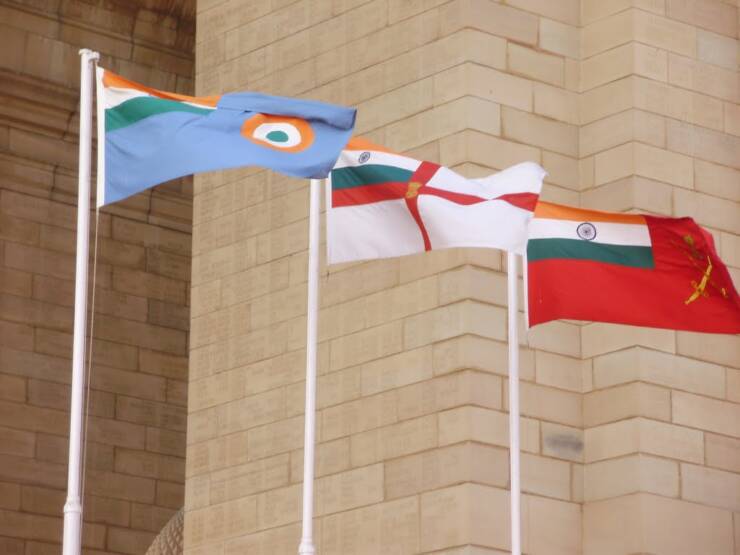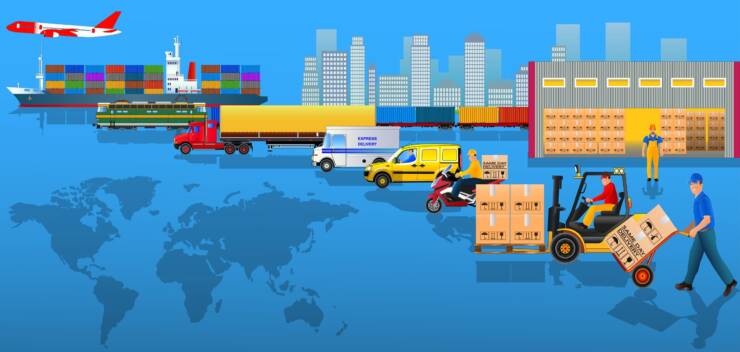“Separate ground, sea and air warfare is gone forever. If ever again we should be involved in war, we will fight it in all elements, with all services, as one single, concentrated effort.”
– President Dwight D. Eisenhower Special Message to Congress, 3 April 1958

The armed forces of India have come a long way in the last 70 years. Today India can rightfully boast of a very professional Army, Navy and Air Force in service to the nation. They have been able to protect the territorial integrity of an aspiring nation very commendably. However, with technology-driven changes all over the globe, as also in our immediate neighbourhood, we cannot afford to sit on our laurels.
The much-awaited initiative by the government on tri-service synergy has taken place in the form of the appointment of the Chief of Defence Staff (CDS). This is just a first baby step and a lot more needs to be done to fight and win wars of the future. On the operational side, the country is looking forward to Integrated Theater Commands and joint training doctrines. While we do all the operational planning, at no stage should the policy makers forget that there needs to be a joint approach towards Integrated Logistics for the three services.
Logistics Management
The logistics management of the armed forces is not only limited to maintaining the huge manpower resources and keeping them battle worthy at all times, but also involves the ‘in service’ life of the equipment. Any military weapon or piece of equipment has to be maintained for its entire service life and sometimes even beyond that. The cost of induction also takes into account the cost to be borne throughout its life. Almost two-thirds of the cost of any military equipment is estimated to be spent in just keeping war like stores in battle worthy condition. The ‘life cycle’ of any military weapon system has to be seen in the context of reliability, maintainability and availability.

In India, not much attention has been accorded to logistics. While the last decade was spent in the planning of Revolution in Military Affairs (RMA), little or no thought was given to Revolution in Military Logistics. Hence, we have seen that our response to all operational contingencies as regards logistics has been ad hoc and knee-jerk. This was pretty much evident during the recent standoff against China in Eastern Ladakh. A mandatory requirement of high-altitude winter clothing had to be imported in the face of the enemy. The logistic lessons of the year-long standoff must be analysed to ensure we are better prepared in the future.
Integrated Logistics Support (ILS)
ILS is a process of development of logistics support and system requirements for military equipment and weapon systems, with the aim of creating an ecosystem that ‘lasts longer’ and requires ‘less support’, thereby reducing costs and increasing return on investments. ILS therefore addresses these aspects of supportability not only during acquisition, but also throughout the ‘operational life cycle’ of the system. The impact of ILS is often measured in terms of reliability, availability and maintainability. Most modern armed forces have the logistics incorporated during the entire phase of procurement of military hardware. In fact, the ILS must be part of the design and development of all military equipment.

In the Indian context, it is felt that the Indian Navy and the Indian Air Force have a far better ILS resource as compared to the Indian Army. It is time that the best practices of the other services are incorporated in the new logistics system. The army being more manpower-oriented has not kept pace with computer-driven logistics systems. It has a lot of catching up to do, since placing the right amount of support, at the right time and in the right quantity will be a challenge. The economics of logistic support is extremely important since the resources and funds availability will always be conflicting. Hence economy of effort will be of paramount importance. IT-enabled systems akin to Amazon and Walmart will have to be planned and implemented with modifications to suit our systems.
We will have to think of integrating our procurement and production agencies in a seamless manner from the level of the MoD down to the service specific logistics agency. Cost cutting and economy of effort will have to be matched with operational efficiency. The newly created Department of Military Affairs (DMA) under the CDS must take into account the common logistics requirements of the three services, as this will help us to identify redundancies and stop wastages.
Challenges in Indian Context
The three services have developed their own unique system of logistic support over the years. The navy and air force evolved modern techniques and procedures as they were growing in size and with their interaction with modern forces the world over. The army retained a large number of legacy systems put in place during the British raj. It has taken the army almost 70 years to do away with Military Farms. Similarly, a large number of Ordnance, Supply and Workshops still exist, which are not only highly inefficient, but also a huge drain on the scarce resources. The clothing depots, petroleum platoons, supply companies and animal transport, which were established during the Second World War, are still in existence. A lot of extra flab has to be trimmed down in order to bring in ILS that can assist, if not all three, at least two of the services.
Future Wars are likely to be short, sharp and technology intensive conflicts, conducted at lightning pace simultaneously across multiple areas within the same theatre or across boundaries of more than one geographic command. In almost all cases we may be surprised by the actions of the enemy as it happened during the Kargil war of 1999 and the recent clashes with China in eastern Ladakh. Success in this kind of an environment will depend not only on force projection at the earliest but also sustaining it over a period of time. Nobody envisaged that the standoff against China would last for over nine months, including peak winters. The requirement to integrate all services in a very complex operations environment presents the greatest logistics challenge. The logistics system that supports our forces in future battlefields therefore must be a seamless organisation that provides state-of-the art support with joint efficiency and maximum effectiveness. In other words, there is a need to develop an operationally joint, orchestrated logistics “system of support systems” for the future.
Joint logistics is an emerging imperative in the Indian operational setting. There is an incredible scope for integration of logistics amongst the three services. A number of areas such as automation of common logistic processes, modes of transportation, clothing, ammunition and explosives, maintenance of critical equipment, provisioning and procurement policies and medical services have already been identified.
The process has to be top-driven starting from the MoD, DMA to the three services. There is an urgent need to identify the commonality in processes and practices to initiate the process of joint-manship in the field of military logistics. The future wars are going to become increasingly complex, demanding logistical ingenuity and organisational skills of a very high order.
The author is a PhD in Nuclear Strategy and Doctrine. He is a motivational speaker and is known in the Indian Army for Unconventional Small Team operations in the Kashmir Valley. Post superannuation he is the CEO, Save the Himalayan Foundation, and a full-time author and editor. The views expressed are personal and do not necessarily reflect the views of Raksha Anirveda








